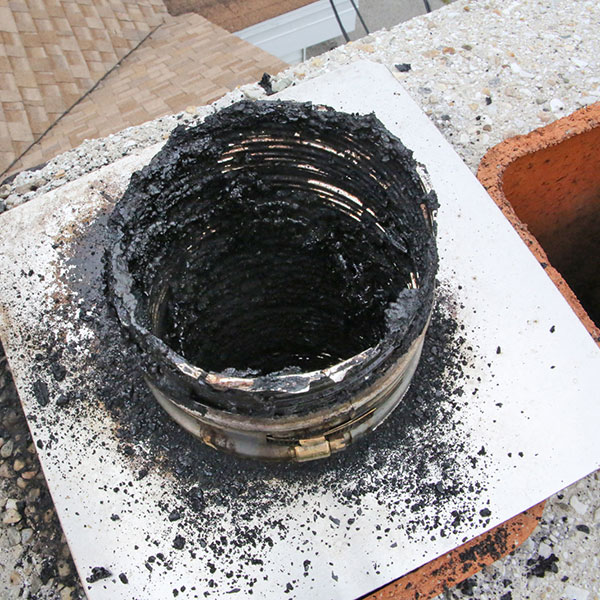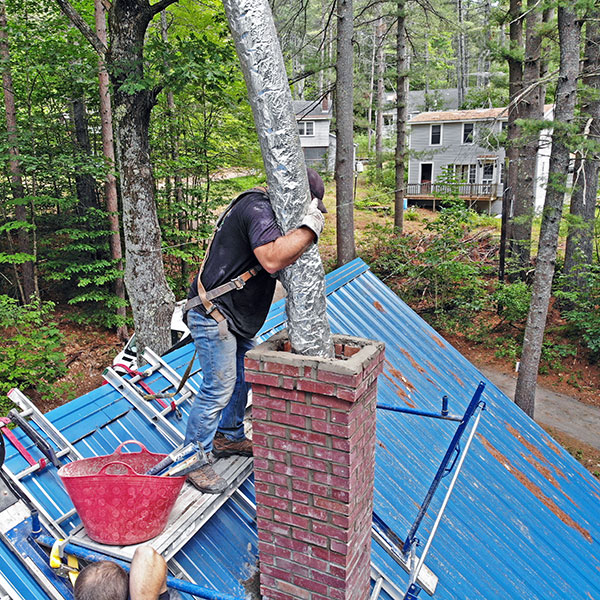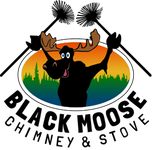Falling snowflakes against pillows of smoke billowing out of chimneys are a common sight on cold days and nights while millions of families enjoy the warmth and crackling flames that a fireplace and heating stove brings during the festive winter season. While everything might seem well at first glance, there may be hidden dangers lurking in your chimney. Here are the top three chimney dangers and how to prevent them.
 Creosote
Creosote
Creosote is a chemical byproduct created during the combustion of solid and liquid fuels such as wood and gas. As it continues to accumulate in the chimney, the powdery substance hardens into a dark, tarry, and crusty material that is highly flammable. The high temperatures or a hot ember flying inside the flue can spark a chimney fire. A chimney fire can damage the interior masonry, flue liner, and other internal components. It could also spread throughout the home. Most residential fires are due to excessive creosote build-up in the chimney. Having a Certified Chimney Sweep® clean your chimney at least once annually will help prevent chimney fires.
Flue Obstruction
Flue obstructions are another chimney danger that homeowners need to prevent. It commonly occurs when small animals like birds, squirrels, and raccoons climb inside an open flue and build their nests. Falling leaves, debris, and creosote build-up can also block the vent. A flue obstruction is hazardous because it inhibits the venting of toxic fumes and exhaust causing smoke and carbon monoxide (CO) gas to back-up inside the living space. Some signs of CO poisoning include headaches, nausea, and dizziness. Make sure to have an annual chimney inspection to minimize the risk of a flue obstruction interrupting your fireplace enjoyment. Also, install a chimney cap with a mesh screen to keep critters at bay. Periodically check that the chimney cap is secure and replace damaged or missing chimney caps as soon as possible.
Flue Liner Cracks
The flue liner protects the masonry against the heat, flames, and toxic fumes of a fireplace or heating stove. A chimney fire, corrosion, and normal wear and tear can cause cracks to develop in the clay tiles that form the liner. While small at first, these cracks create passageways that could allow smoke and fumes to spread throughout the house, including the living space. Moisture from water leaks or condensation can further exacerbate the problem accelerating the flue liner’s deterioration. Homeowners with clay tile liners should periodically have a video flue scan to check for flue cracks that are too small for the unaided eye to see. Also, relining the flue with stainless steel or HeatShield® will improve the chimney’s safety and efficiency.
Other Chimney Safety Tips
Here are a few safety tips to keep your family safe while enjoying your fireplace or heating stove during the winter season.
- Only burn seasoned firewood. Wood that has been seasoned (dried) for at least six months burns more completely with less creosote, soot, and smoke, due to its lower moisture content.
- Never toss Christmas trees, wrapping paper, or other objects into a fireplace. The chemicals in these products can create toxic fumes and may even cause an explosion.
- Keep children and pets away from the fireplace. The firebox’s metal components will remain hot to the touch for several hours after the fire burns out.
- Install a smoke and CO detector. Test monthly and replace batteries every six months.
- Schedule a professional chimney inspection and cleaning at least once a year.
Questions? Ready for an Appointment? Contact Us Today!
We are South-Central New Hampshire’s #1 choice for chimney, fireplace & masonry services. Our team is National Chimney Sweep Guild (CCP/NCSG) certified and well-trained in current industry standards and procedures. We are ready to assist with inspections, repairs and installations for chimneys, fireplaces, wood and pellet stoves and more.



